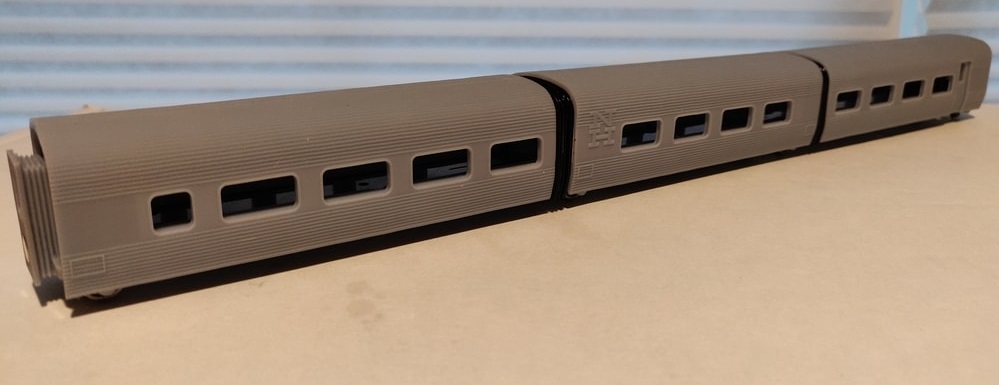This page is from my old website and contains out of date information, I recommend using the drop-down menu under this page’s menu item to find information about my models. I’m leaving this page as is for now primarily for SEO and troubleshooting purposes.
John Quincy Adams/Speed Merchant Talgo Trainsets
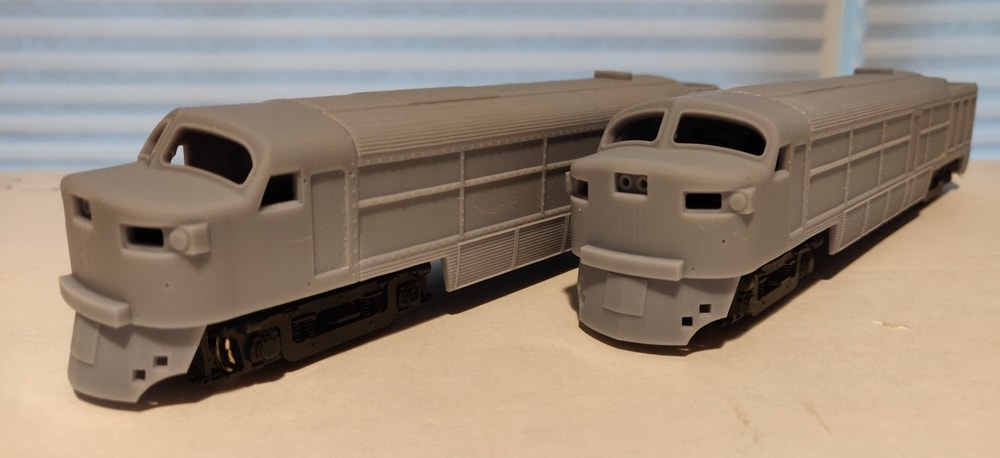
New Haven style FM P12-42 locomotives
One three-unit articulated Talgo-style coach. Each trainset consists of five coaches with a locomotive at each end.
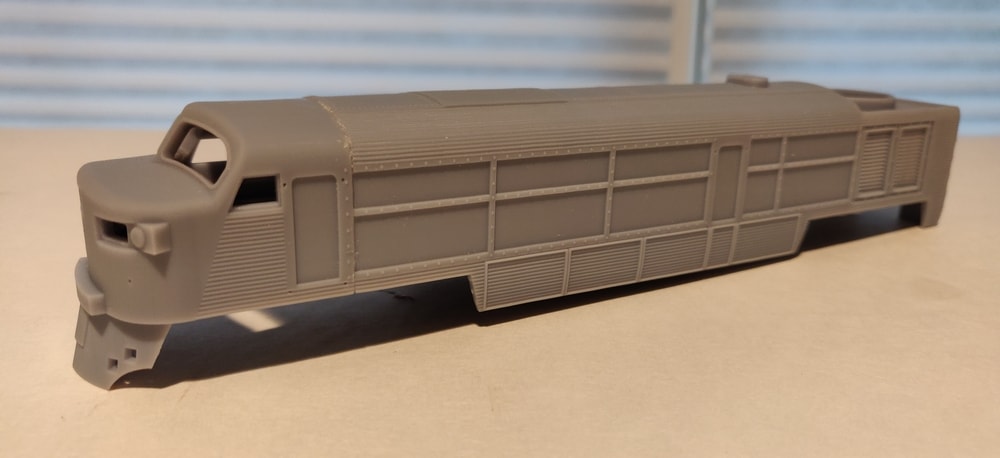
Boston & Maine style locomotive body shell
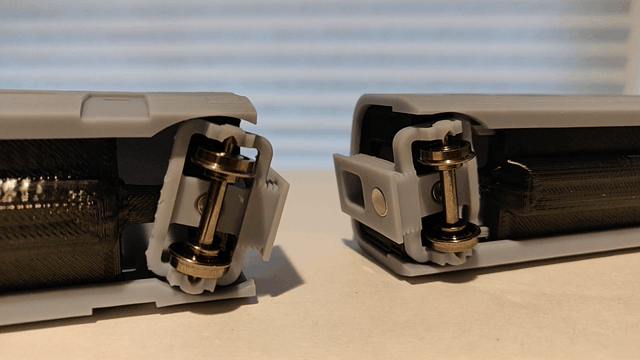
The magnetic coupling system ensures reliable close coupling between the cars.
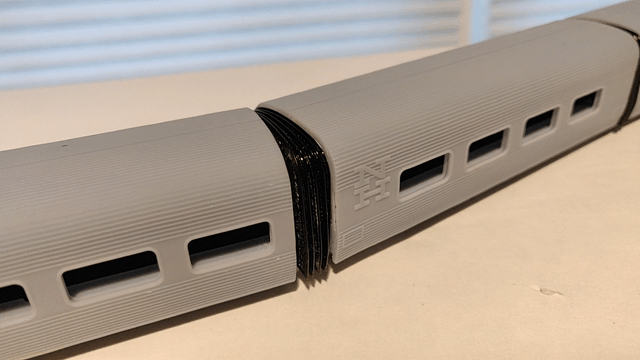
The full-width diaphragms are made from thin plastic sheets that flex as the cars round curves.
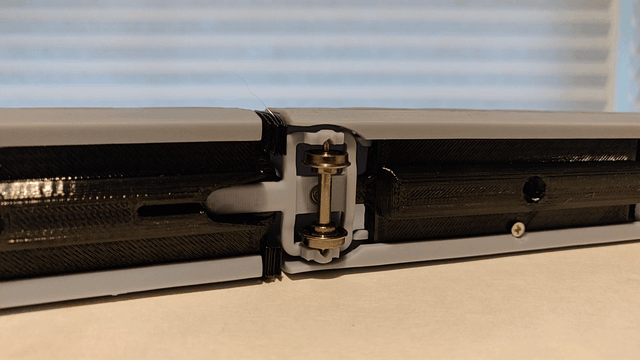
The innermost two-wheel trucks on each coach pivot slightly to keep the wheelsets more perpendicular to the track around curves. The trucks on the ends of the coaches also pivot for the same reason.
The John Quincy Adams and Speed Merchant trainsets were built by ACF and Fairbanks Morse in the mid 1950s at the peak of the lightweight streamliner craze. More information about the prototype can be found on the Streamliner Memories website.
Learn more about purchasing the STL and STEP files for this design here (HO scale).
Baldwin/Westinghouse ‘Blue Goose’ Turbine



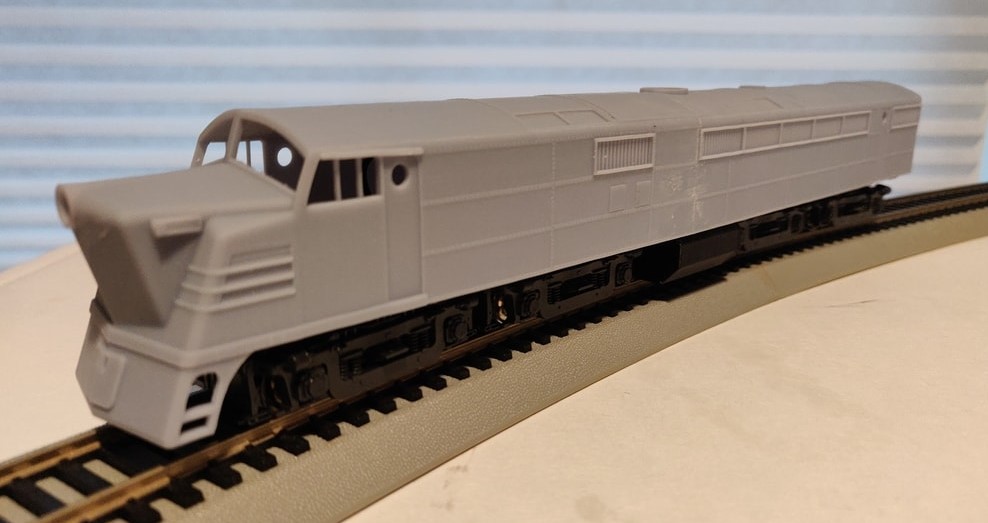
No longer a digital-only model, this locomotive uses a powered truck at each end and a pair of dummy trucks in the center which can slide laterally. 3D printing technology allows for completely see-through grill work which would be difficult or impossible to achieve in a injection-molded plastic model.
Learn more about purchasing the STL files for this design here (HO scale).
GoPro Camera Car Mark II
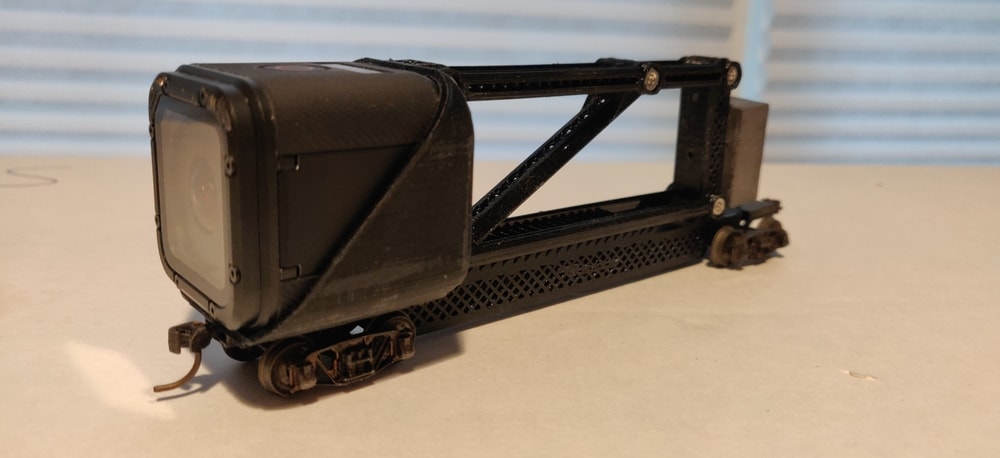
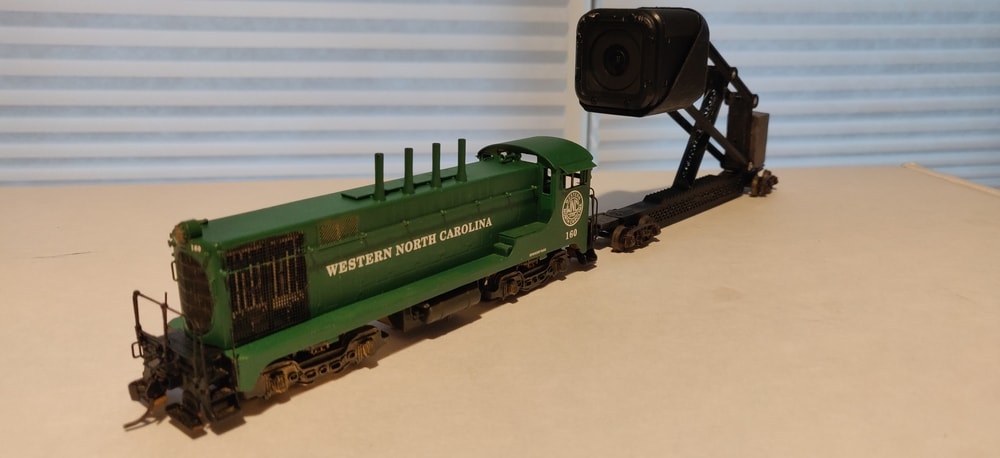
This novel camera car uses series of parallel linkages to lift a GoPro Session and get an ‘over the shoulder’ perspective of the train to which it is coupled. To pass through tunnels, the car collapses to provide an ordinary cab-level view.
Learn more about purchasing the STL files for this design here.
Fairbanks Morse OP-800 Doodlebug
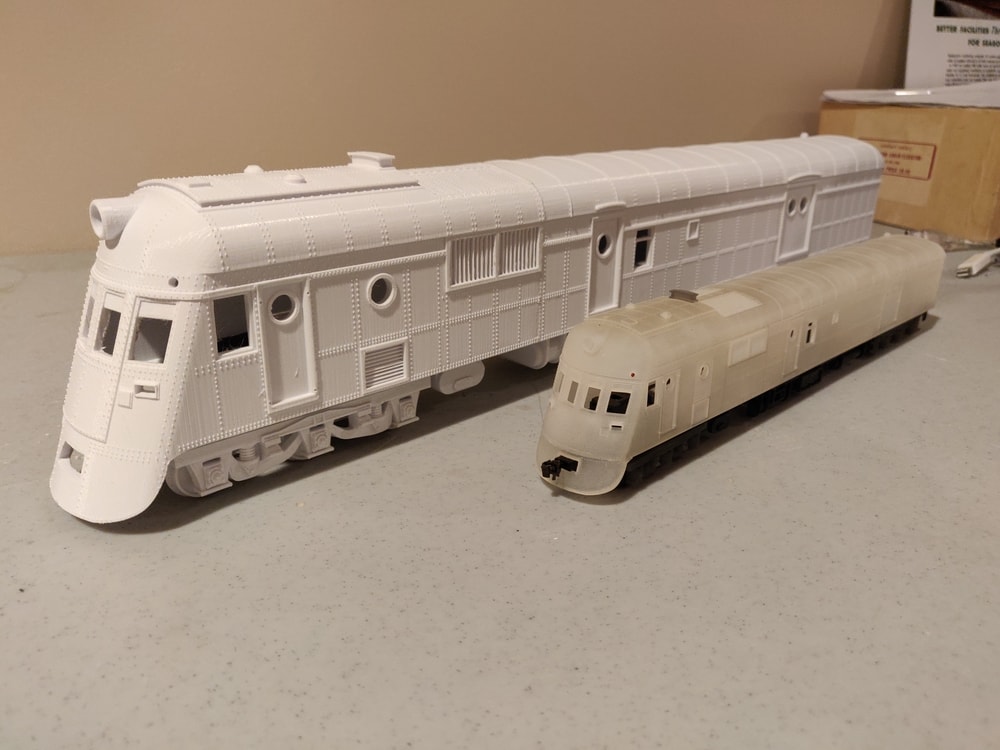
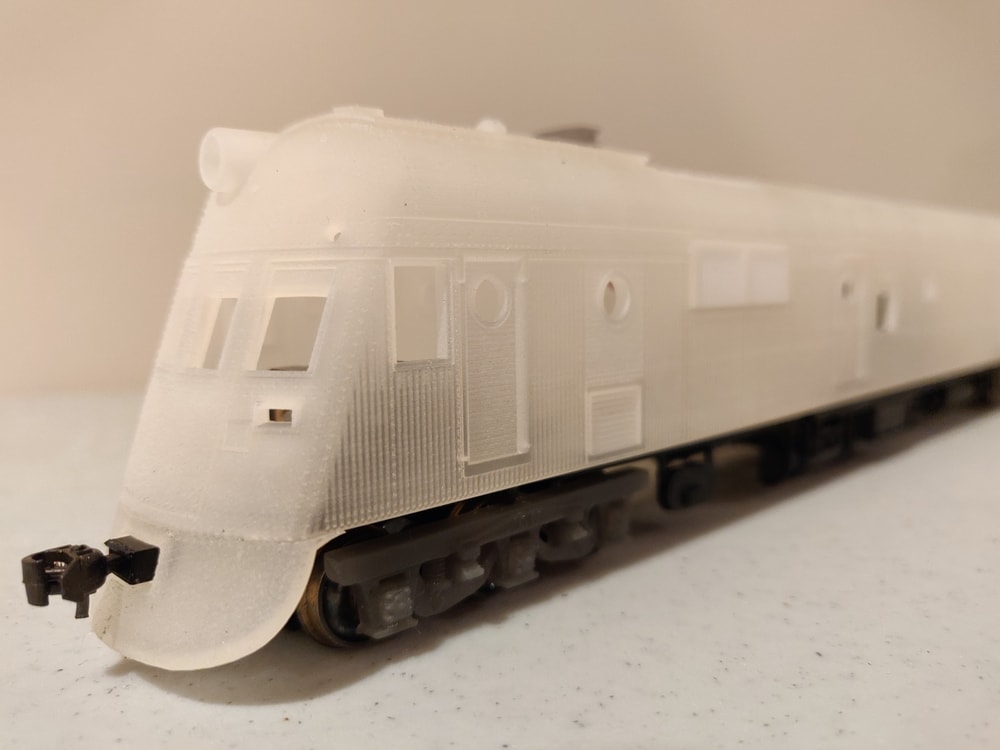
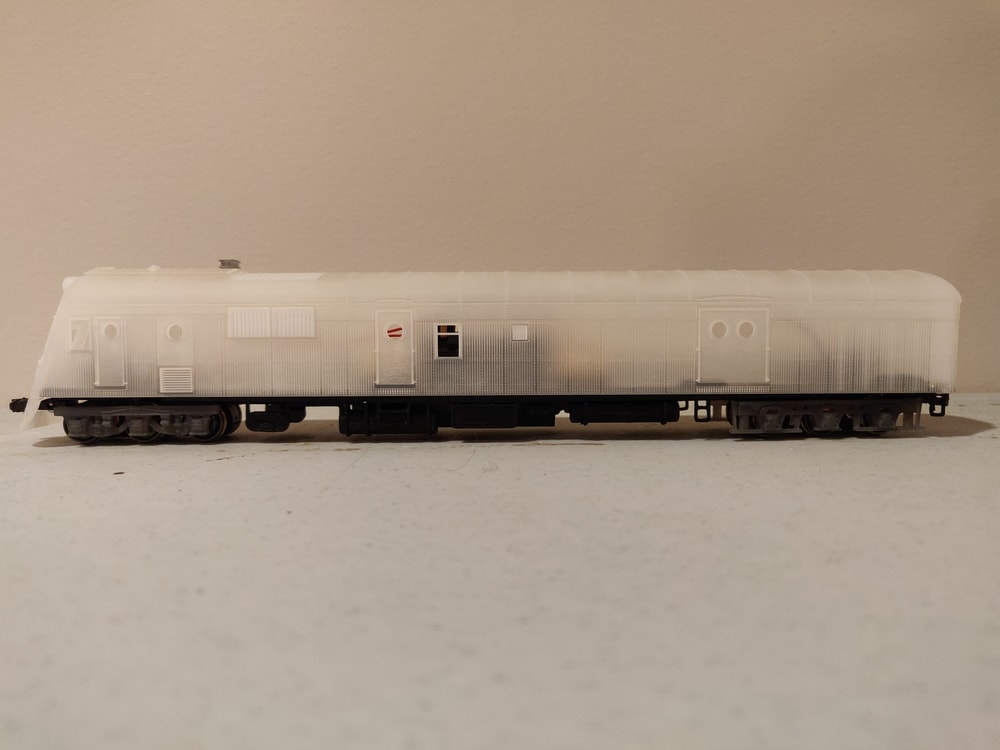
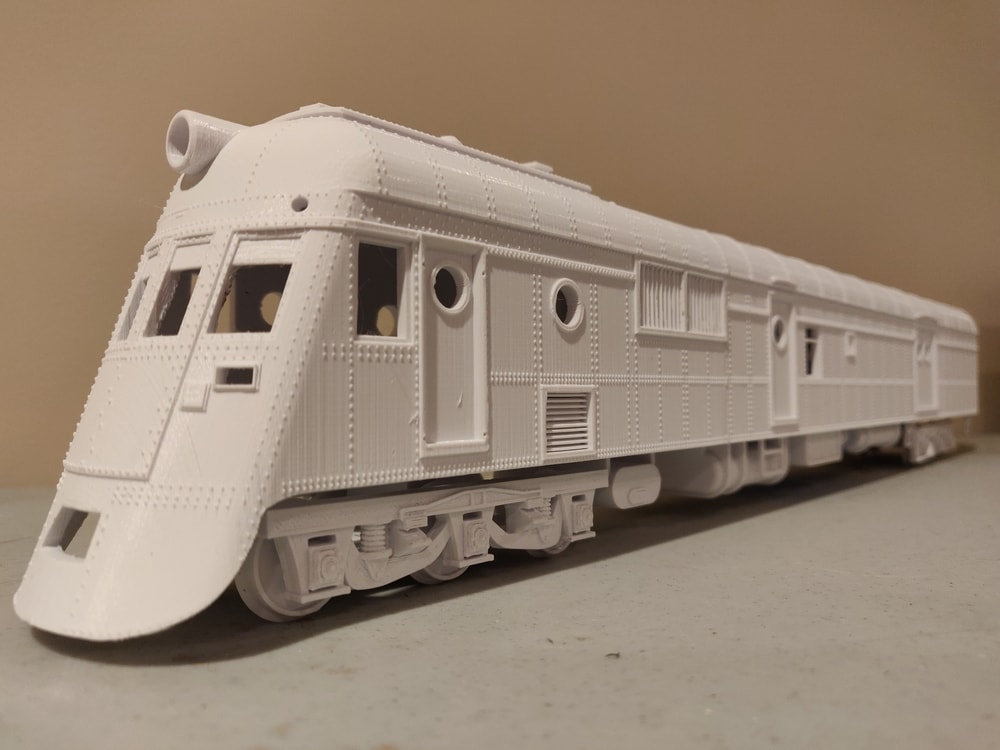
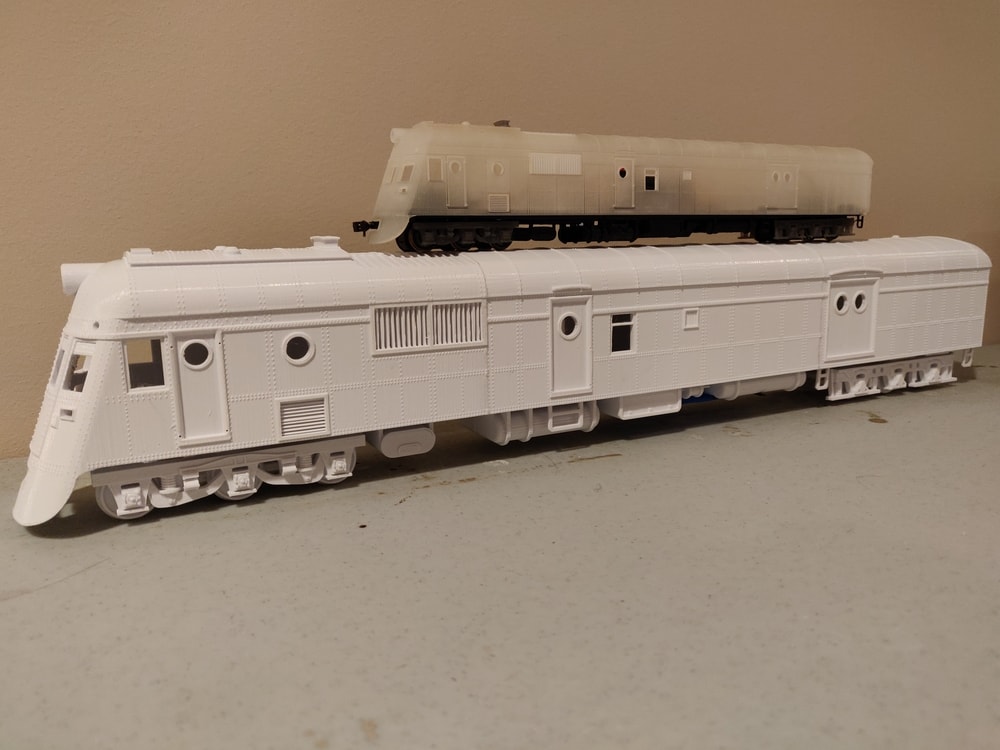
A customer requested both an HO model of this unique Southern Railway prototype for his own layout and a static O scale model for display in a museum. The relatively complex underbody detail required multiple printed parts to replicate. I’m no Rapido, but I think it came out all right! The HO model has a shell from Shapeways while the O scale model was printed entirely on my FDM printer. Interestingly enough, the O scale shell was far cheaper to print than the HO shell (thanks Shapeways).
Learn more about purchasing the STL files for this design here.
ACE 3000
![]()
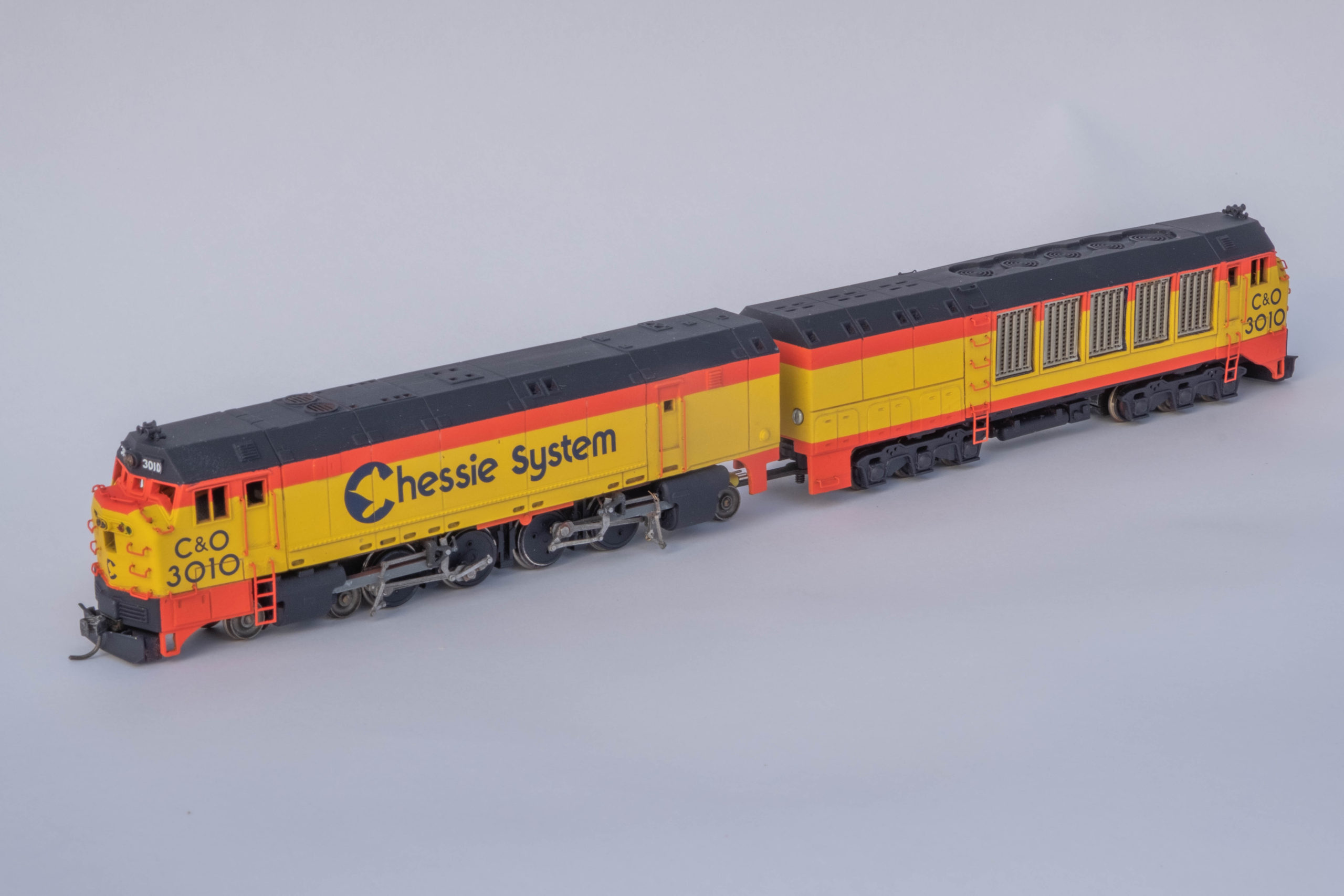






The ACE 3000 was an attempt to create a modern coal-fired steam locomotive in response to the 1970s oil crisis. The history of this proposed locomotive is fascinating, and this TrainWeb page is a great resource if you want to learn about the project.
I took on this project to assess the feasibility of building and selling steam locomotives. Unfortunately, creating the mechanism was time consuming and the finished product was not something that I would take pride in selling. The motor in the locomotive (‘Power Unit’) itself has only enough power to spin the drivers, while the tender (‘Support Unit’) has a heavily weighted Kato RSC2 chassis that does almost all of the pulling. I will certainly design, print, and sell steam locomotive parts, but I don’t think it’s a good idea for me to sell something with a mechanism I’ve butchered.
I was able to replicate the unique driver arrangement by taking two Bachmann 2-6-0 models and placing them back to back after sawing off the rear driver. Both driver sets are geared together with one motor by extending one of the motor shafts and installing a second worm gear. This was a necessity as both driver sets would have been internally coupled on the prototype to ensure that the drivers were always 180 degrees out of phase with each other (note in the CAD rendering the drivers are incorrect).
The bodies were printed in UV photocure resin, and I was pleased with the detail I was able to achieve after tuning the printer. Note the line of rivets running across the Power Unit.
Learn more about purchasing the STL files for this design here (HO and N Scales)
NCDOT Passenger Cars



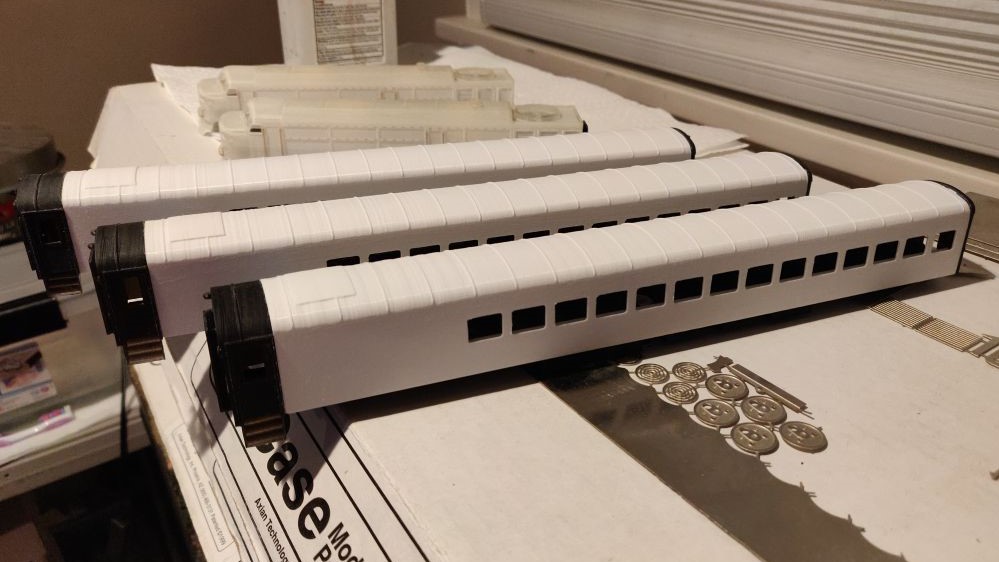
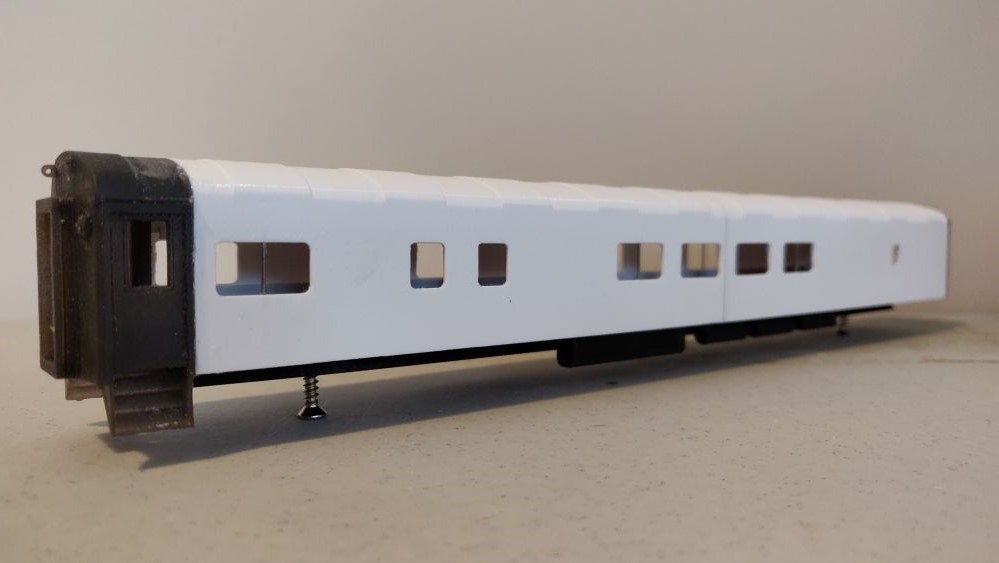
One might think that I could pretty easily expand my business by offering to design and print more than just model railroad-related items. On the contrary, I find that the bulk of my repeat customers are interested in the ultra-niche, even by model railroading standards. One such group are the hardcore modelers of the NCDOT commuter railroad in North Carolina. The prototype uses a mix of rebuilt 50s and 60s passenger equipment as well as older EMD commuter power. The .STL files for some of these rebuilt cars are available for download, as well as .STEP files that enable you to easily alter the window configuration and recreate other unique prototypes.
Download the files for free here (HO scale).
Seaboard Air Line Doodlebug #2028
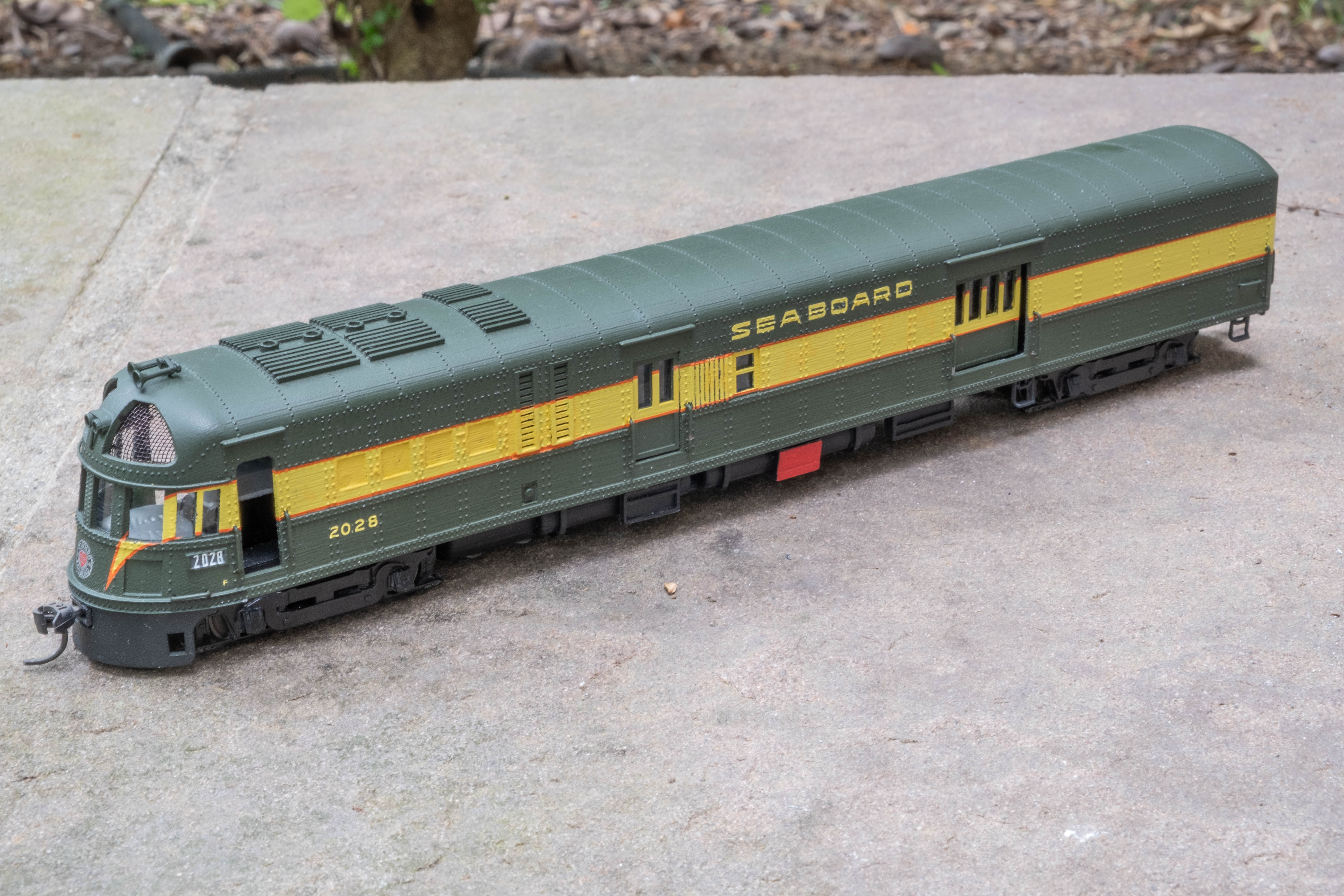
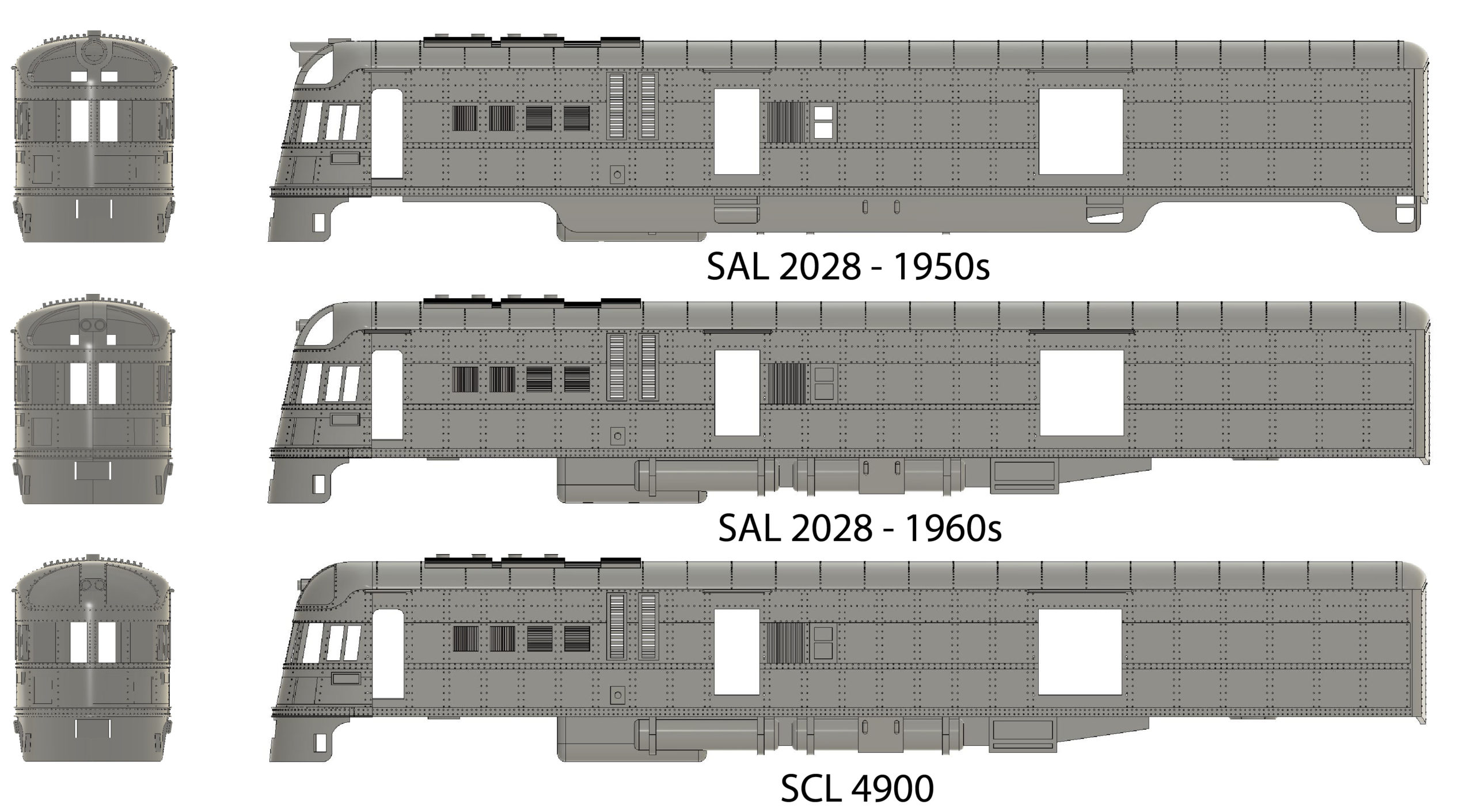
2028 was built in 1936 by St Louis Car Co. and was in service until 1971 as SCL #4900. I’ve designed three shell variants as well as an underbody. This HO model uses the mechanism from a Bowser S12 or Kato RS3.
Learn more about purchasing the STL files for this design here (HO scale).
Circus Wagons

A couple years back, I found a nearly complete set of Walthers Great Circus Train flatcars without any wagons. After learning that the wagons are rare an go for upwards of $20 a piece, I decided to print them instead. The wagons are printed in PLA plastic in to halves and glued together.
Learn more about purchasing the STL files for over 30 circus wagons here (HO Scale).
GoPro Camera Car
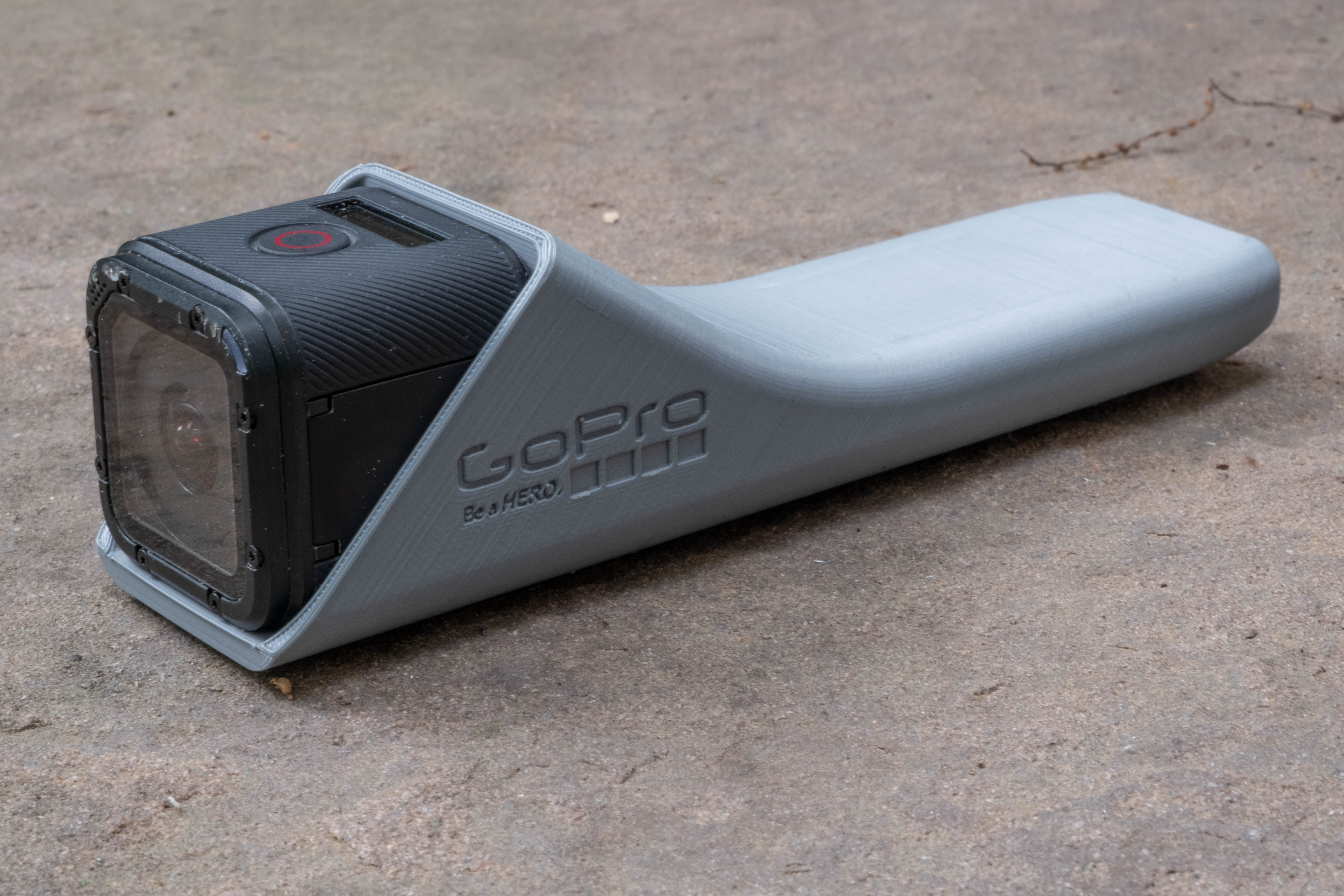
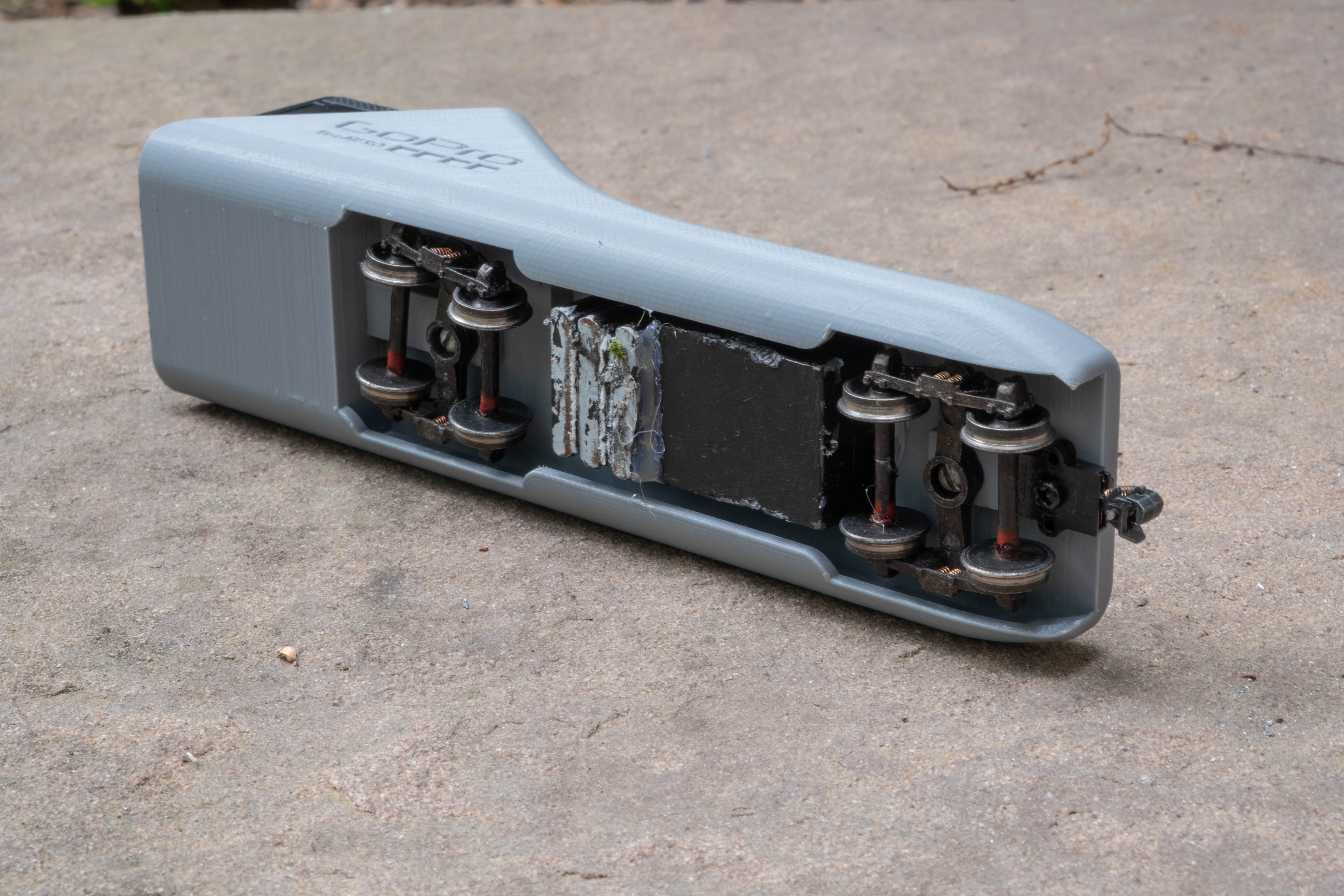
This company’s namesake model, this car uses a GoPro Session action camera to give the operator a first person view of their train. The streamlined design makes the car very distinctive and is a conversation-starter at train shows.
New York Central M-497 “Black Beetle”
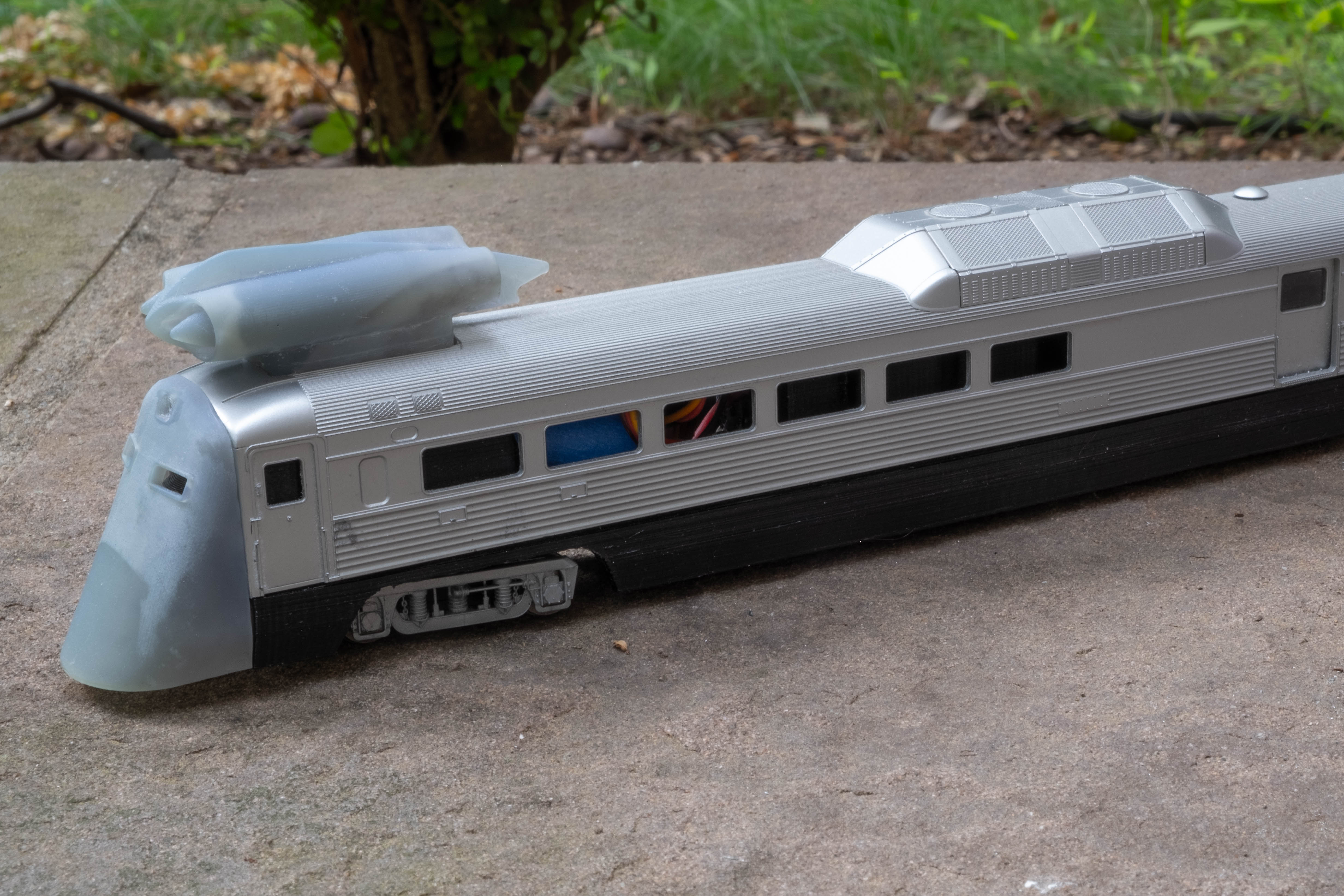
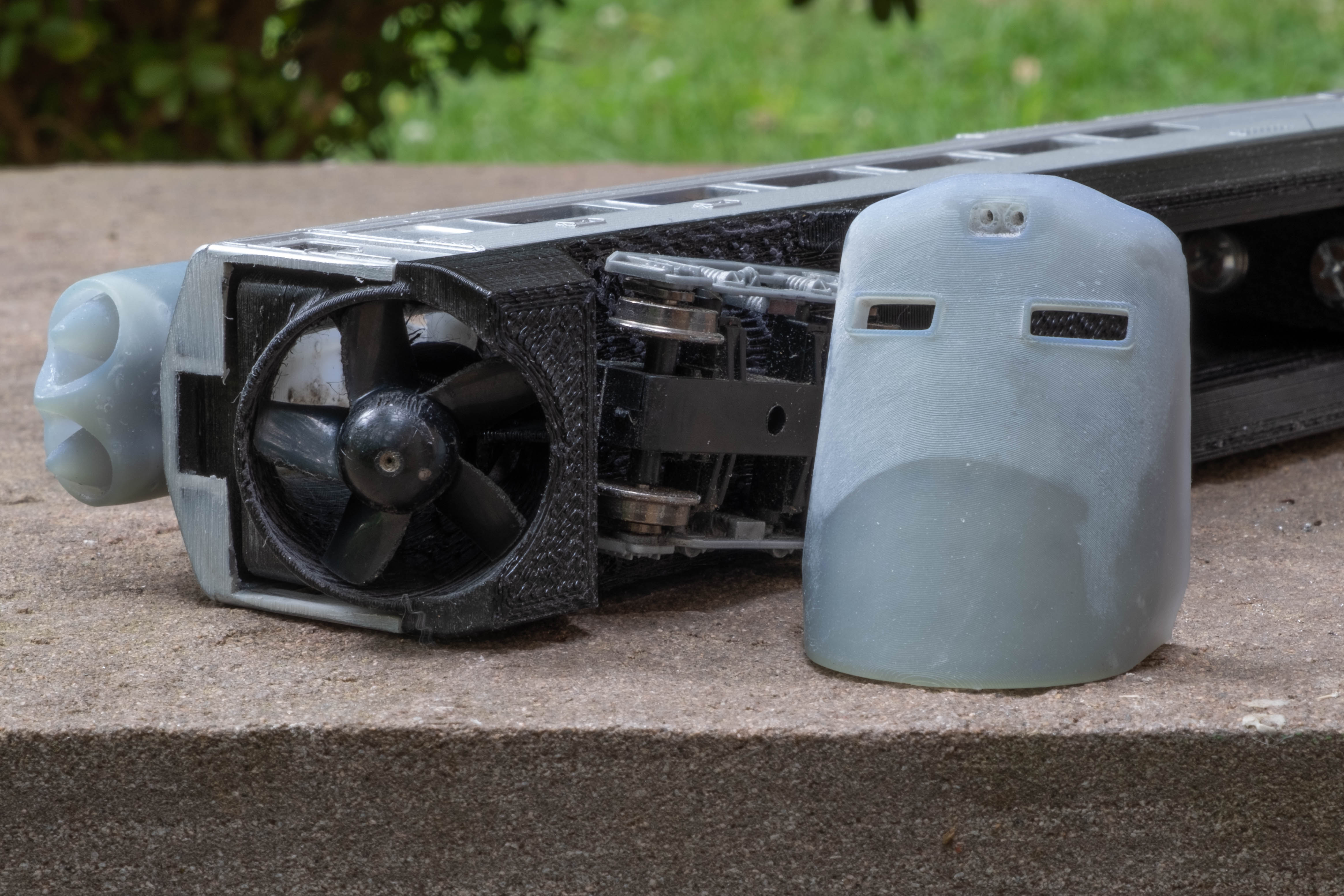
This HO model uses a combination of 3D printing and more traditional kitbashing techniques. The model started its life as a Proto 1000 Budd RDC, with the streamlined chassis and internals printed in PETG and nose and jet engine printed in UV cure resin. Like the prototype, the model is actually powered by blowing air through the two jet engines. I used a small electric ducted fan (EDF) and some RC components. While the model’s scale speed rivals the prototype, it also screams louder than any other model locomotive I’ve heard and can shoot loose ballast into your eyes.
Learn more about purchasing the STL files in order to turn your Budd RDC into an M-497
Evans Auto-Railer
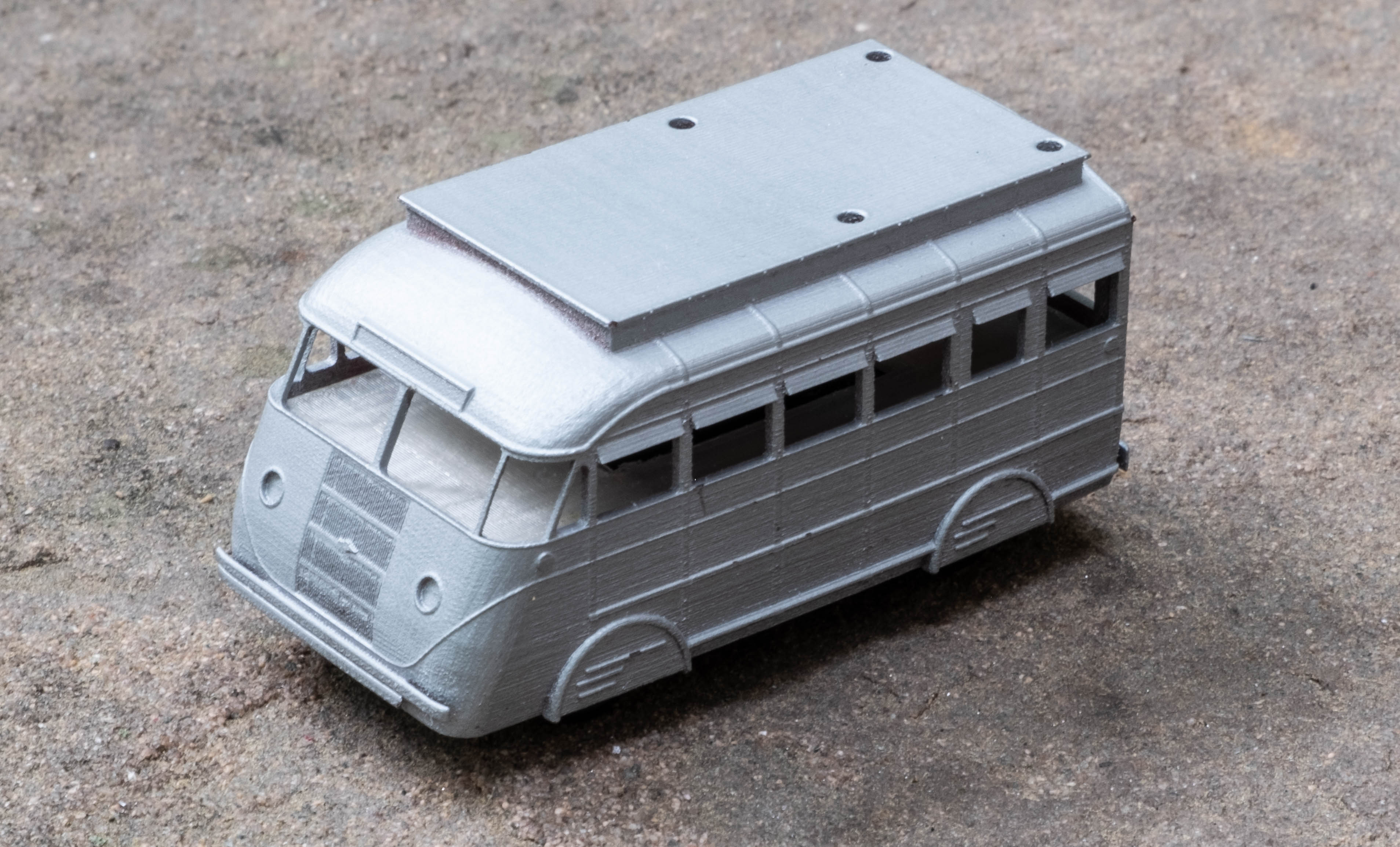
The Washington and Old Dominion Railroad was a Northern Virginia shortline with some interesting and unique equipment. A precursor to modern hi-rail equipment, This bus had retractable flanged wheels which allowed it to ride on both road and rail. While originally purchased to carry passengers into downtown DC, they soon became relegated to maintenance duties. The HO model uses a Bachmann hi-railer chassis and a shell printed in Shapeways’ ultra fine detail plastic.
Learn more about purchasing the STL files here.
Whitcomb 65 Tonner
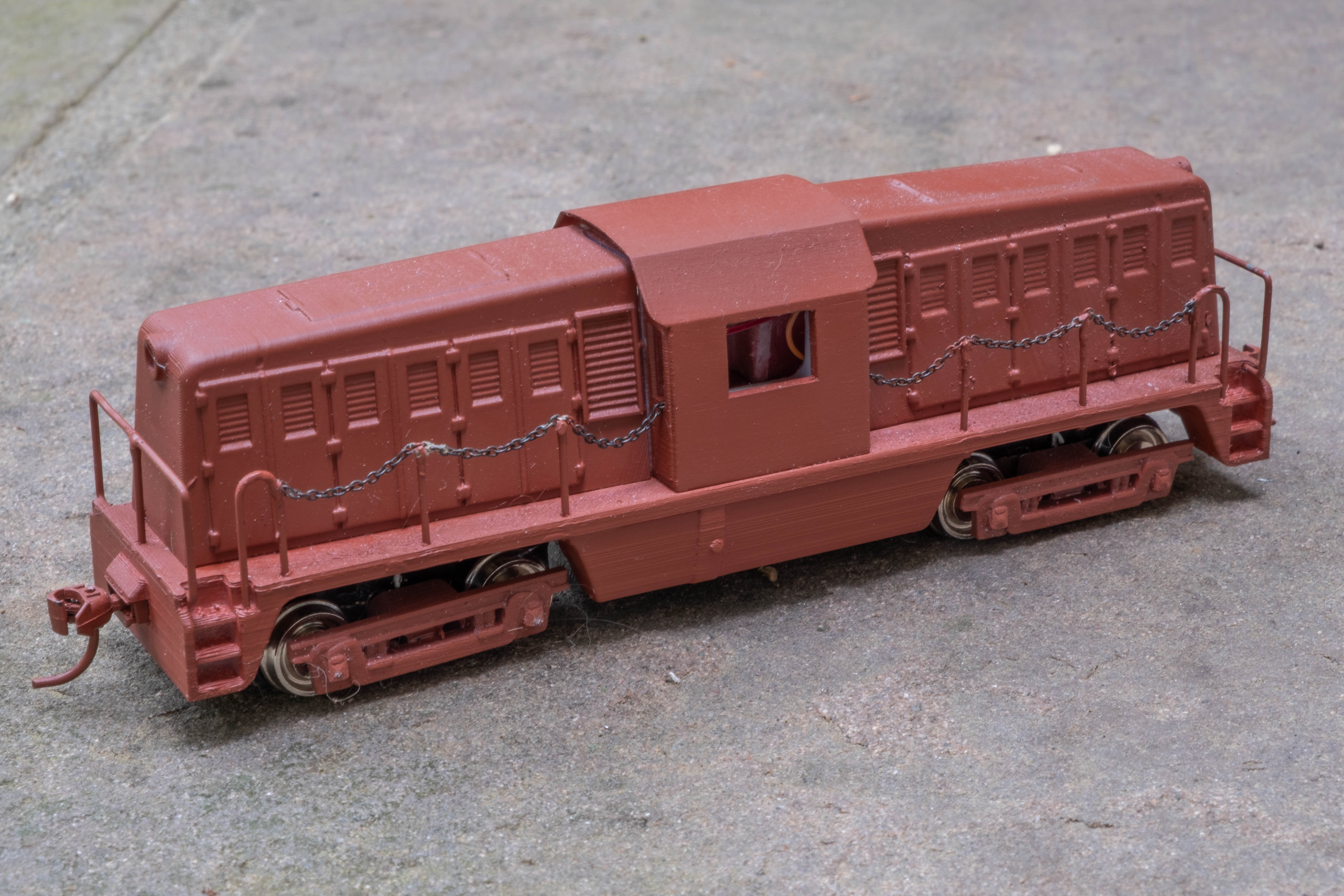
Another W&OD prototype, this model uses a pair of Bachmann 44-tonner power trucks. The cab and walkway are printed in PLA with the hoods in UV cure resin.
New York Central Xplorer/New Haven Dan’l Webster
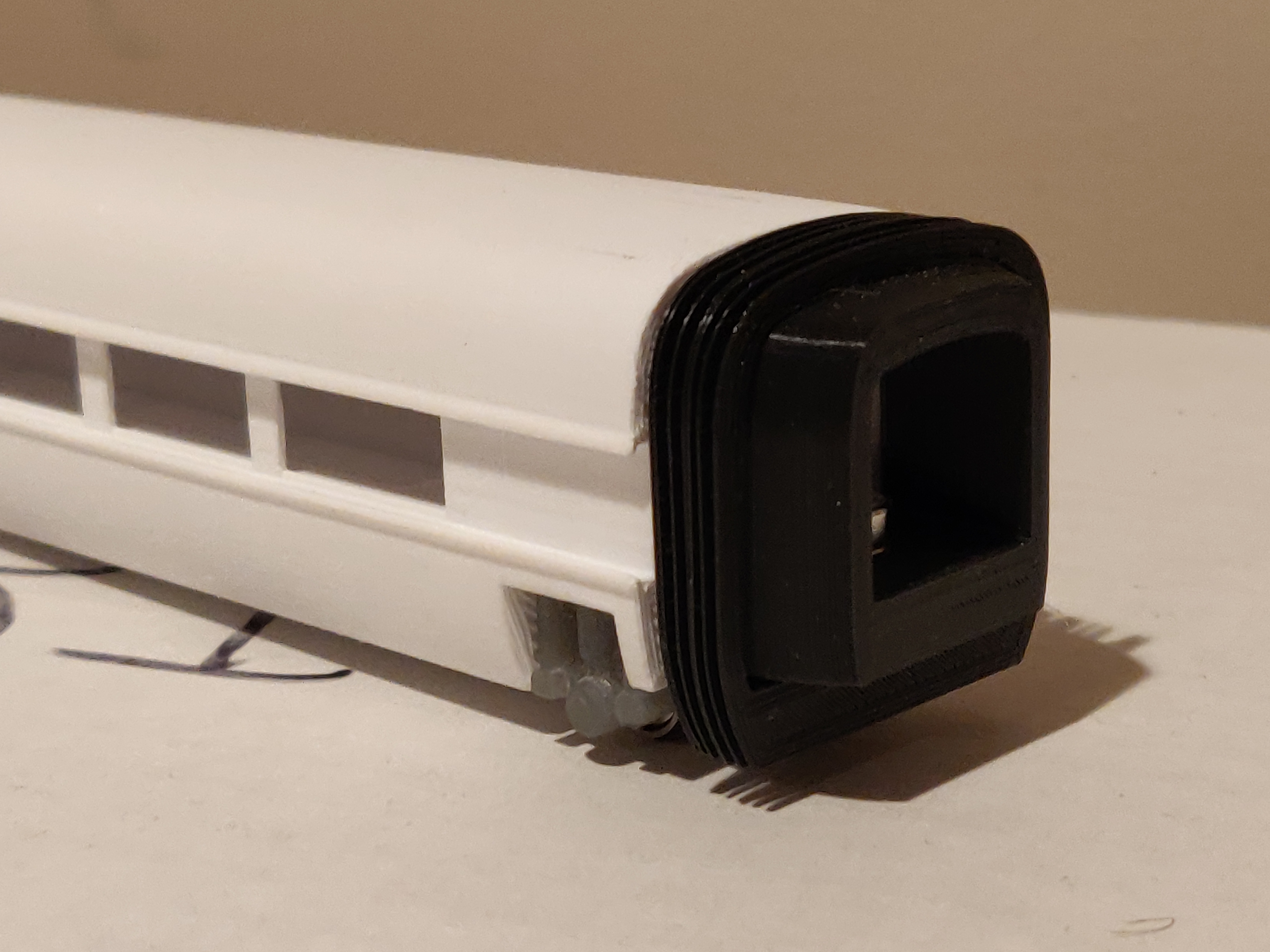
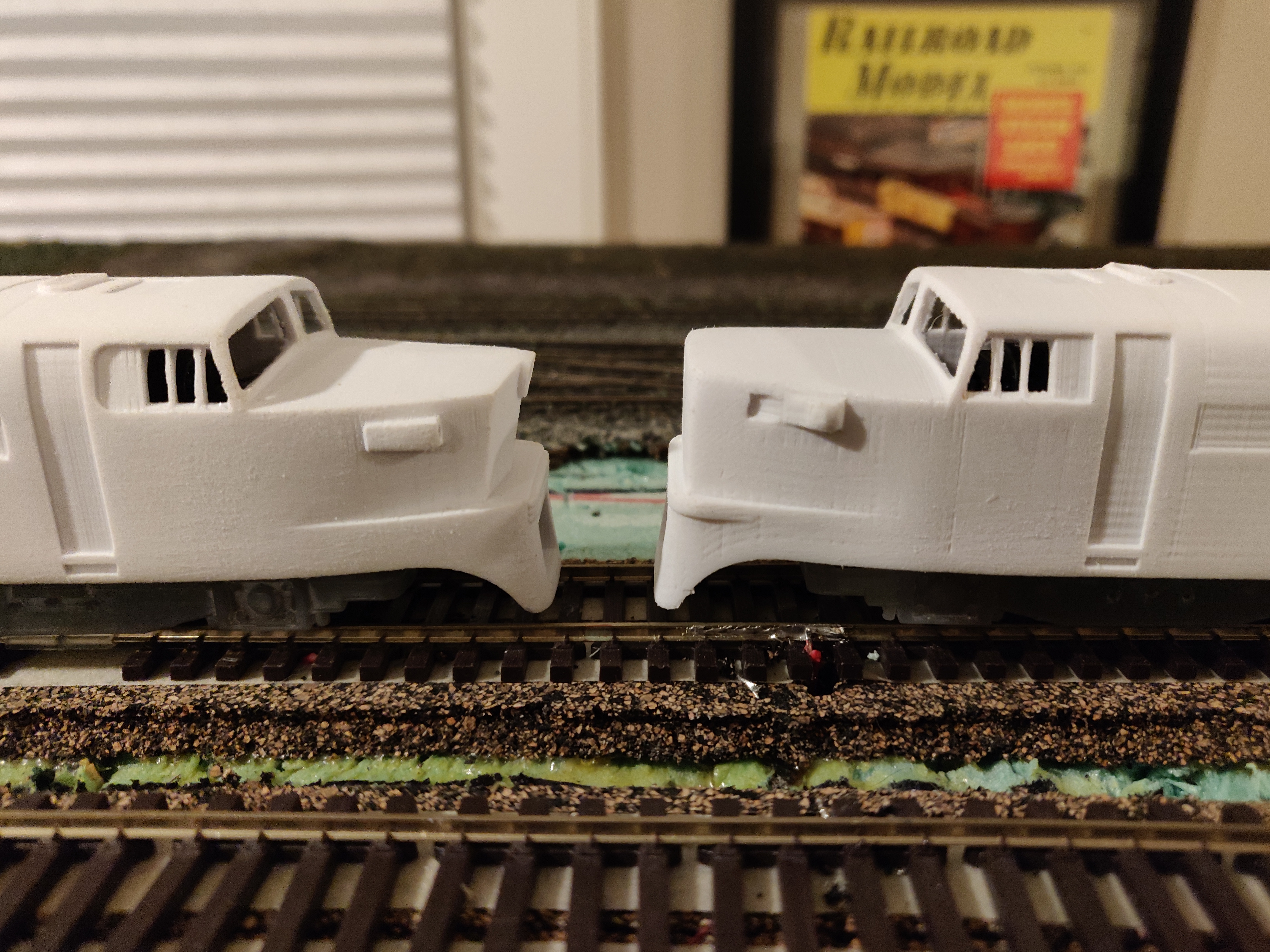
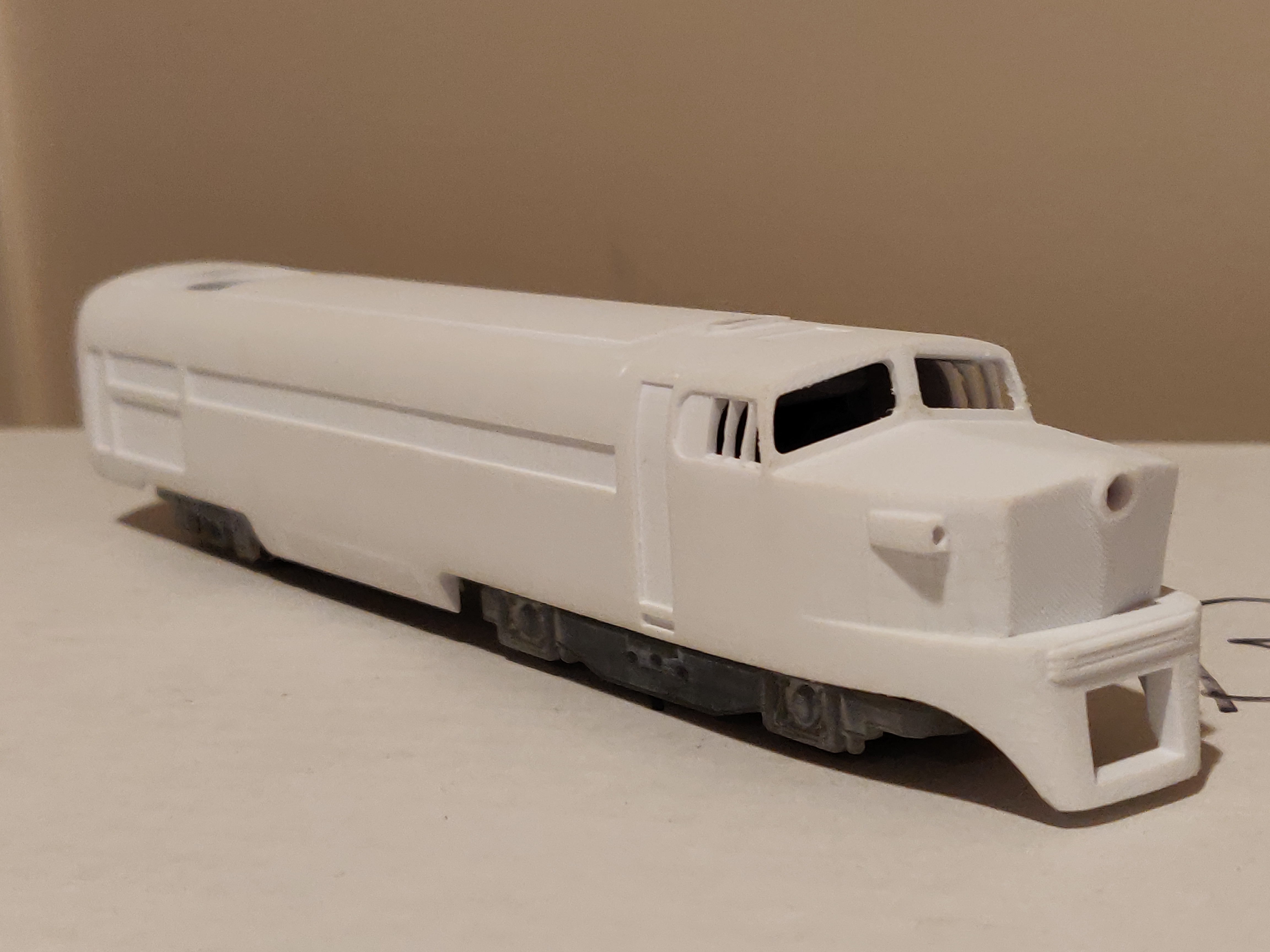
I was inspired to build this model after finding a Rapido Turbotrain in a hobby shop that I couldn’t afford. The shell and chassis of both the cars and locomotives were printed in PLA plastic with the trucks in UV cure plastic. I used a heavily modified Proto 2000 E-unit mechanism, which barely fits in these low-slung units. I was able to recreate the full-width diaphragms with thin flexible sheets of plastic which look great when the train rounds a curve. After completing the Xplorer consist, I got in touch with a New Haven modeler who wanted the Dan’l Webster. I simply printed another chassis and two new New Haven locomotive shells to convert the model to the new prototype.
SAL Jordan Spreader #71945
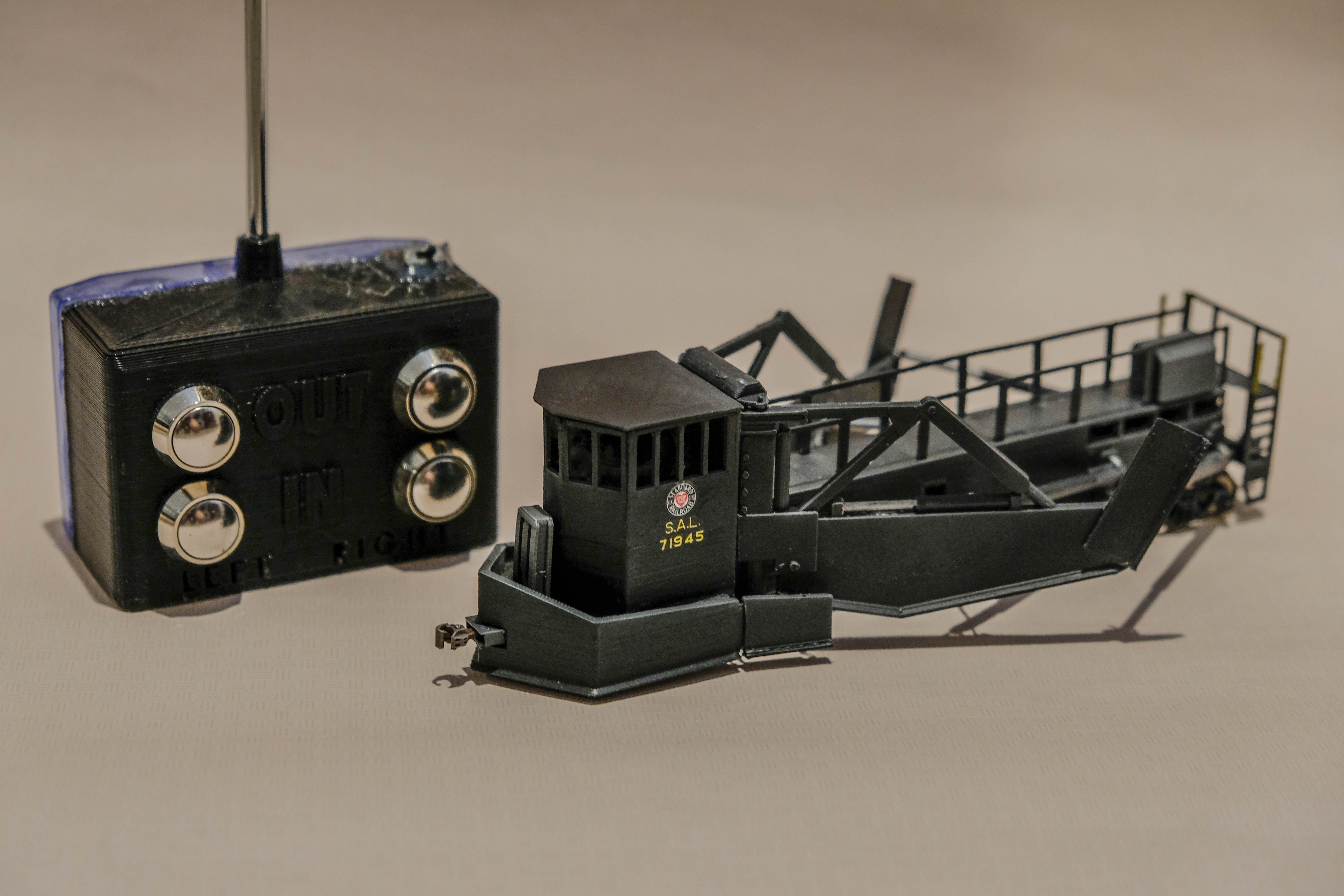
This HO model was printed in PLA plastic and uses the internals of a cheap RC boat toy to remotely actuate the wings. Paper clips and aluminum tubing were used to recreate the complex system of pistons and hinges needed to create an operating model.
Digital Models
These models I have designed but not printed yet. Many of these models are only shells because I normally don’t design the chassis for a model before I find a suitable mechanism. Some of these models are also for sale, but I’ve marked them down as you’ll likely want to add detail or modify the file before printing.
Baldwin DR6-4-1500
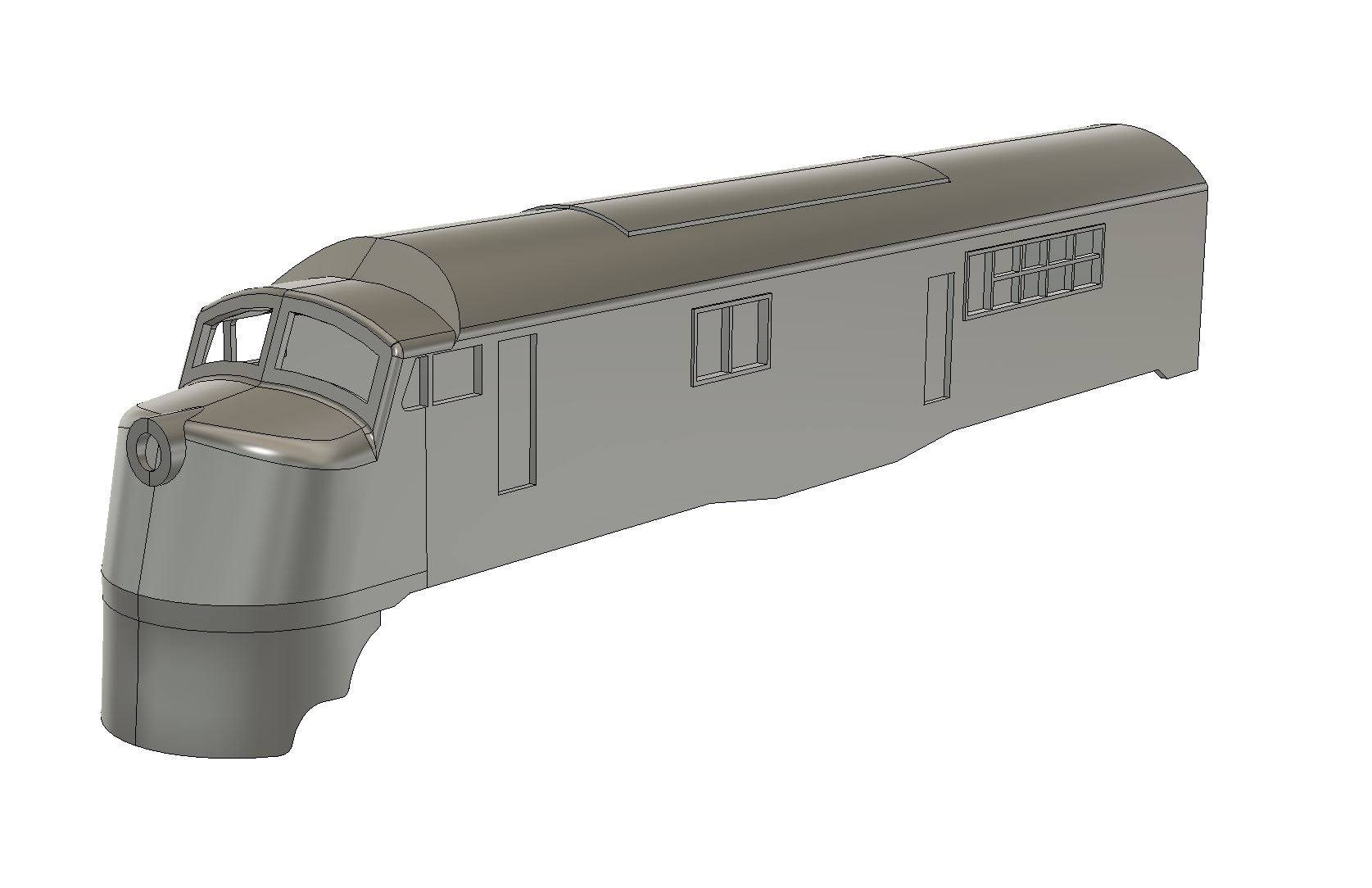
Baldwin 0-6-6-0 DE
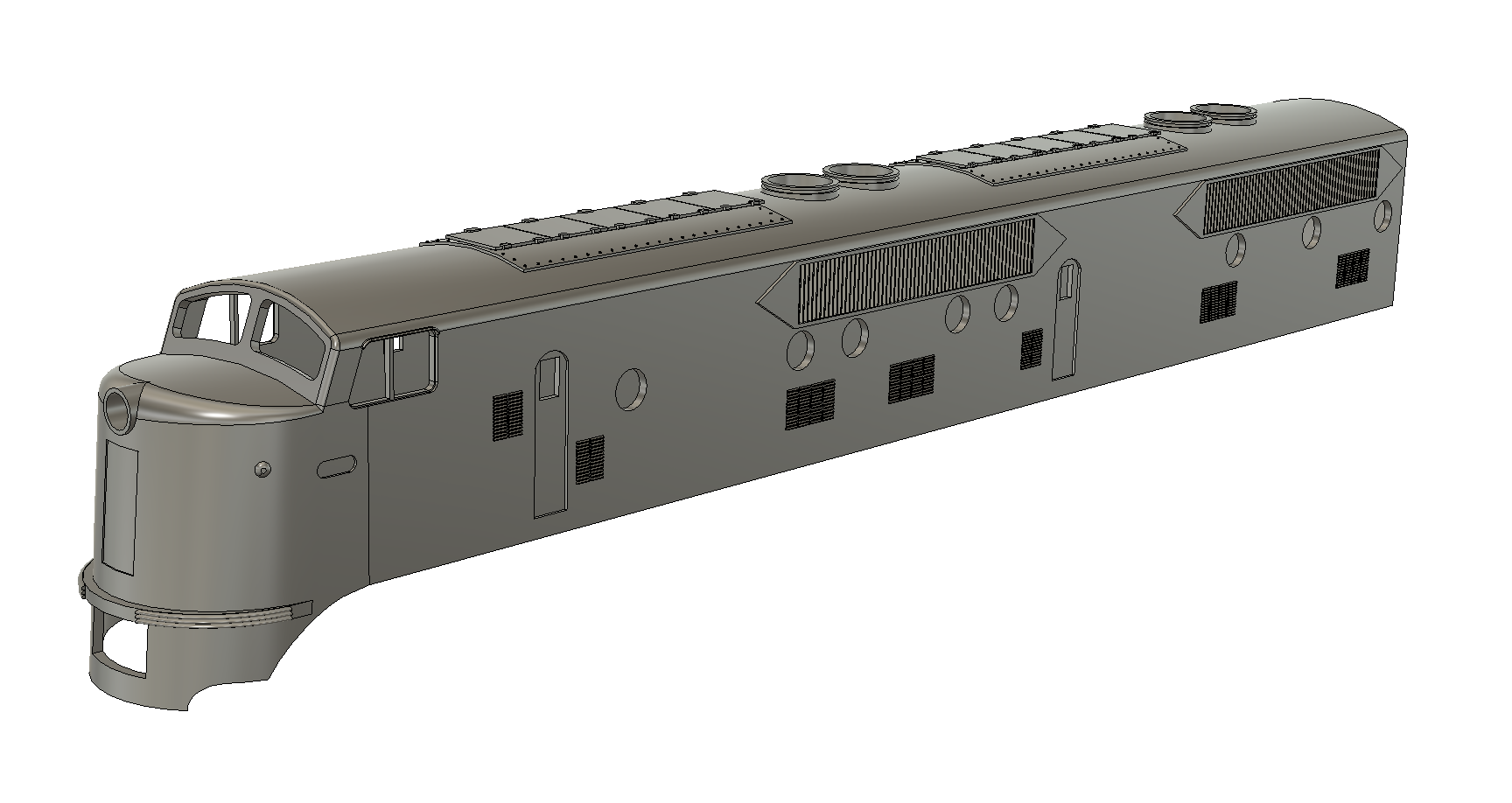
Learn more about purchasing the files for this design here
Ingalls 4-S


